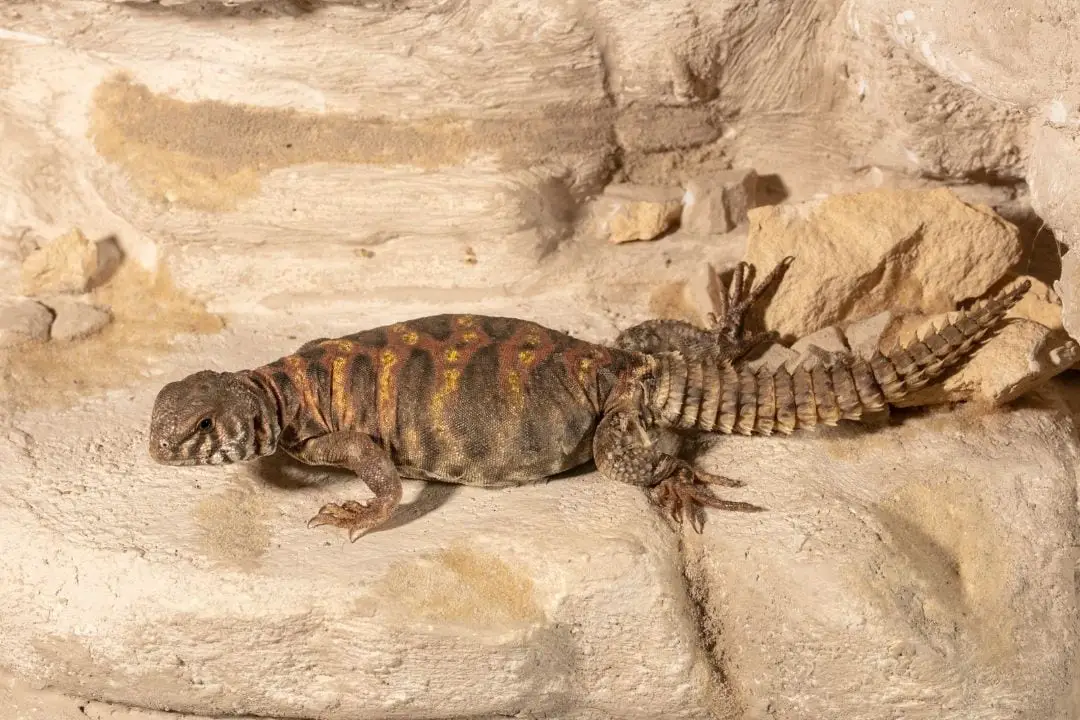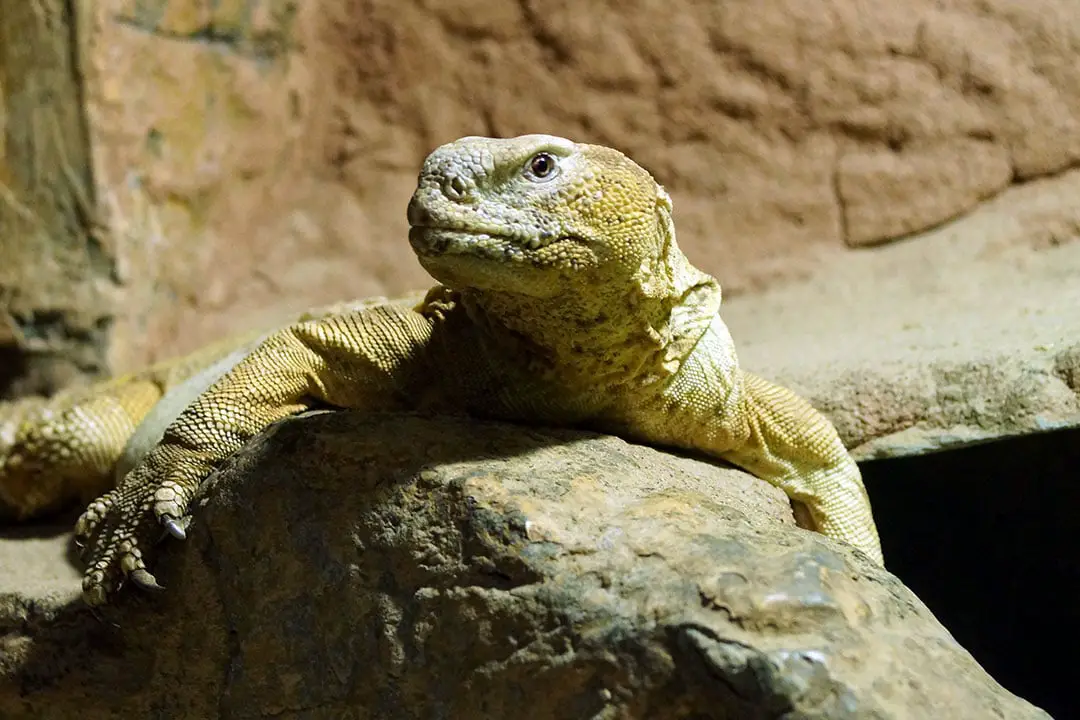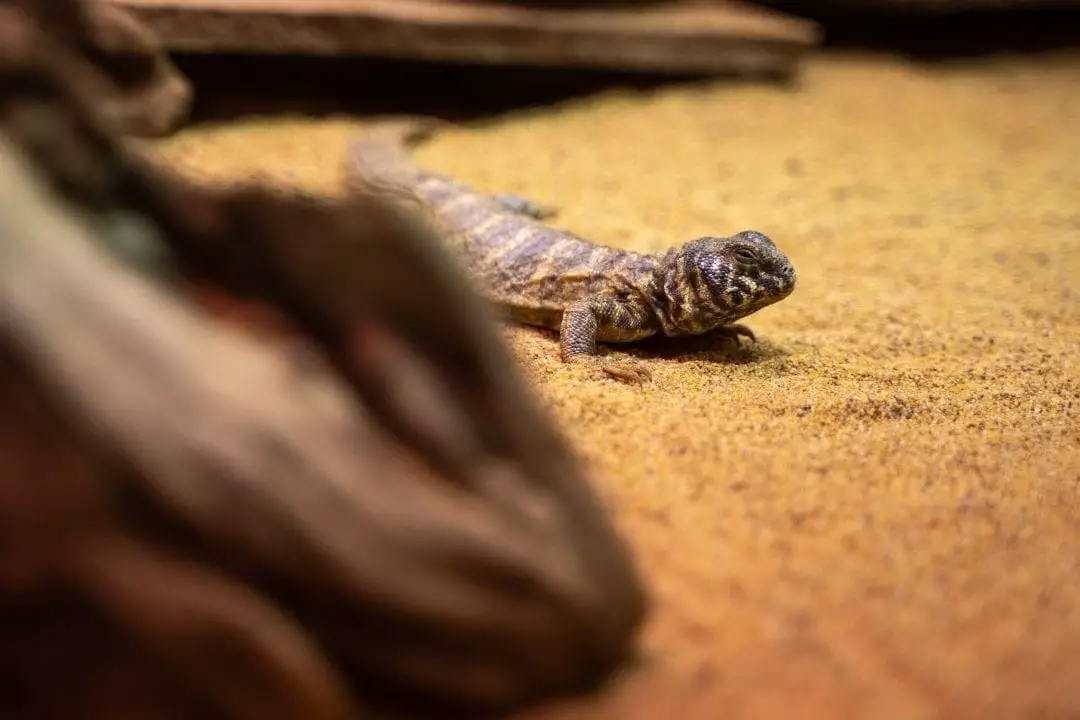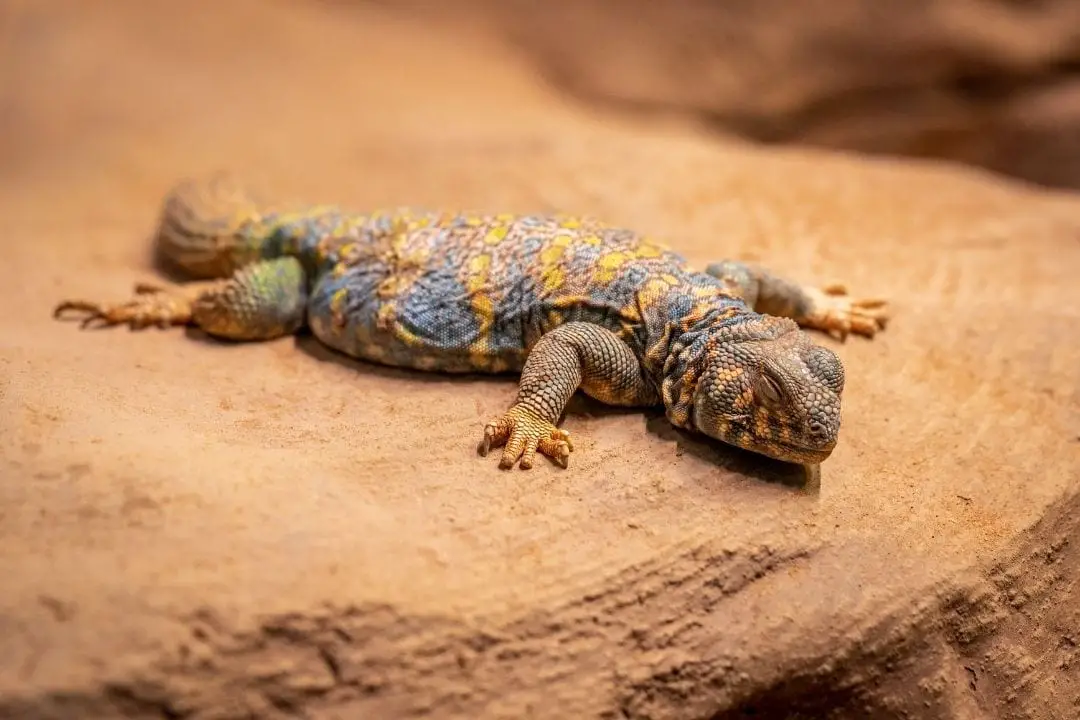Uromastyx is the name for a genus of lizards native to Africa and Asia.
They are also sometimes called spiny-tailed lizards. There are many species in the genus. Because of this, they can have different sizes.
I will be going over the most common pet species primarily.
How big does a Uromastyx get?
There is a wide range of sizes for uromastyx. They can vary from 10 inches long to over 3 feet. The smaller species tend to be more common in captivity.
Juveniles
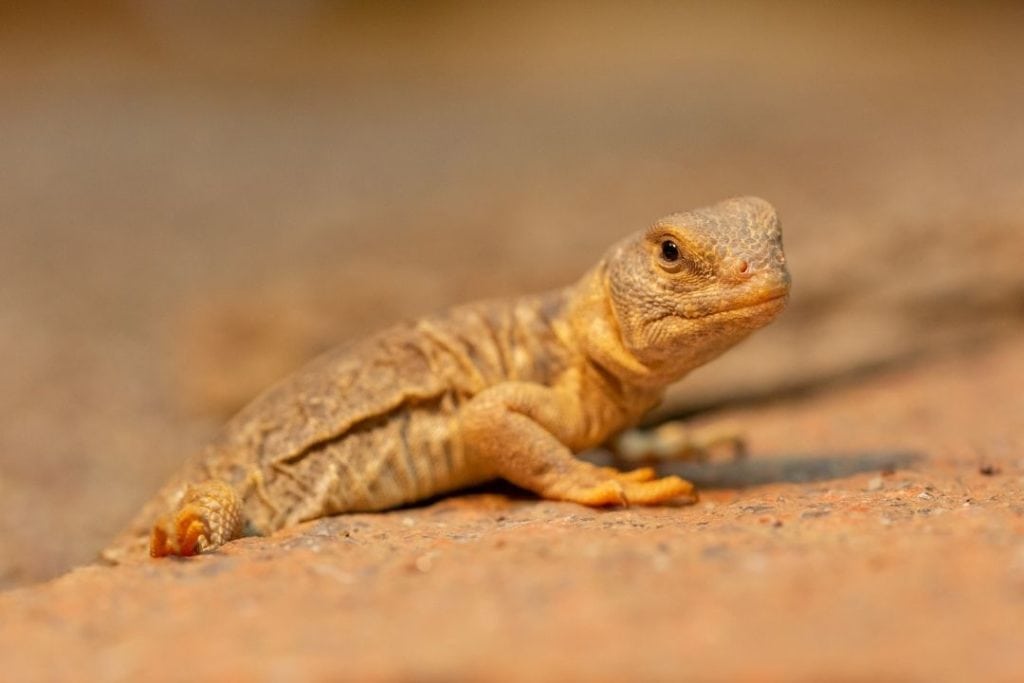
Most species of Uromastyx are tiny at birth. They average 3-4 inches long for all but the largest and smallest species. This means that most juveniles can be housed in a smaller enclosure while they grow out.
The most common large species is the Egyptian mastigure (Uromastyx aegyptia) or dabb.
Since they get so large, a juvenile enclosure gives you time to build the large enclosure they need as adults.
Adults
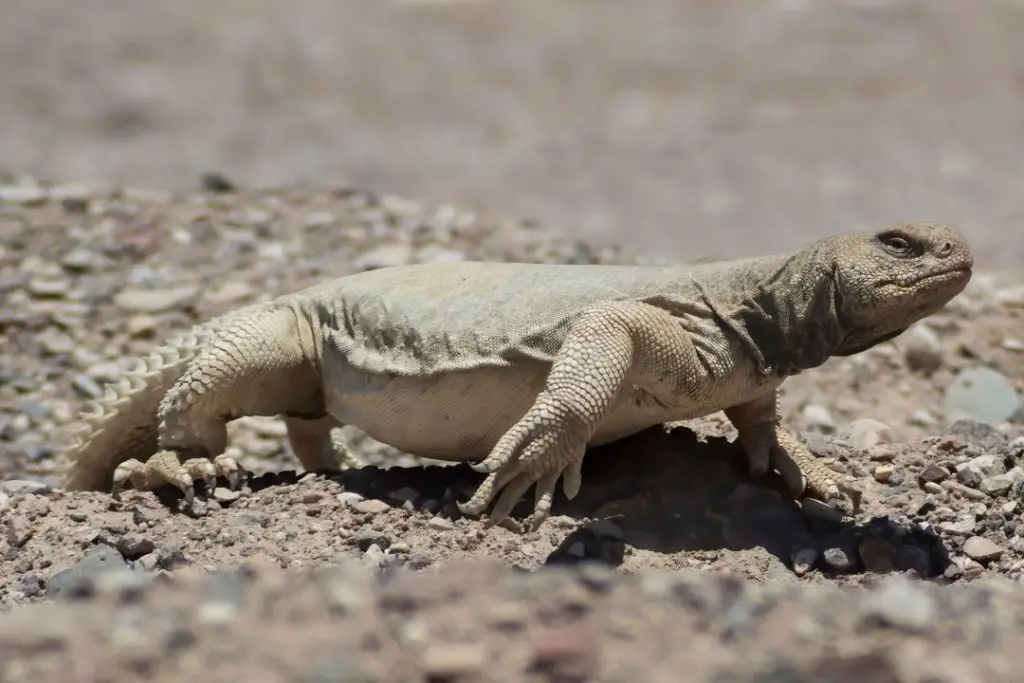
Adult size is where things tend to vary. The Egyptian mastigure is known to reach 30 inches on average. This makes it one of the largest members of the genus and one of the largest species commonly kept.
The North-African spiny-tailed lizard (Uromastyx acanthinura) is 15-17 inches long and average about 450 grams, but some large males can reach 600 grams or 21 ounces.
Most common species in captivity are fairly close in size. These species are typically easy to find as captive-bred animals. The Mali uromastyx is a very common pet uromastyx, and they get between 12 and 16 inches long.
Most animals will not exceed 14 ounces in weight.
The Saharan spiny-tailed lizard (Uromastyx geyri) is 11-14 inches long and rarely exceed 8 ounces in weight for a healthy animal. The ornate uromastyx (Uromastyx ornata) stay under 14 inches long.
The red-banded uromastyx (Uromastyx dispar flavifasciata) is a bit larger on average. They tend to max out at around 19 inches or 50cm.
The ocellated uromastyx (Uromastyx ocellata) is one of the smaller species in the genus. They average about 11 inches long and the average weight is 225 grams or just under 8 ounces.
The princely spiny-tailed lizard (Uromastyx princeps are typically around 10 inches long including the tail. The rainbow spiny-tailed lizard (Uromastyx benti) averages out to be 14 inches or 36cm.
Most other species and subspecies not listed here are somewhere in this range. The vast majority of the genus is under 24 inches long in total. The larger species are less common in captivity since they tend to need so much space.
Weight
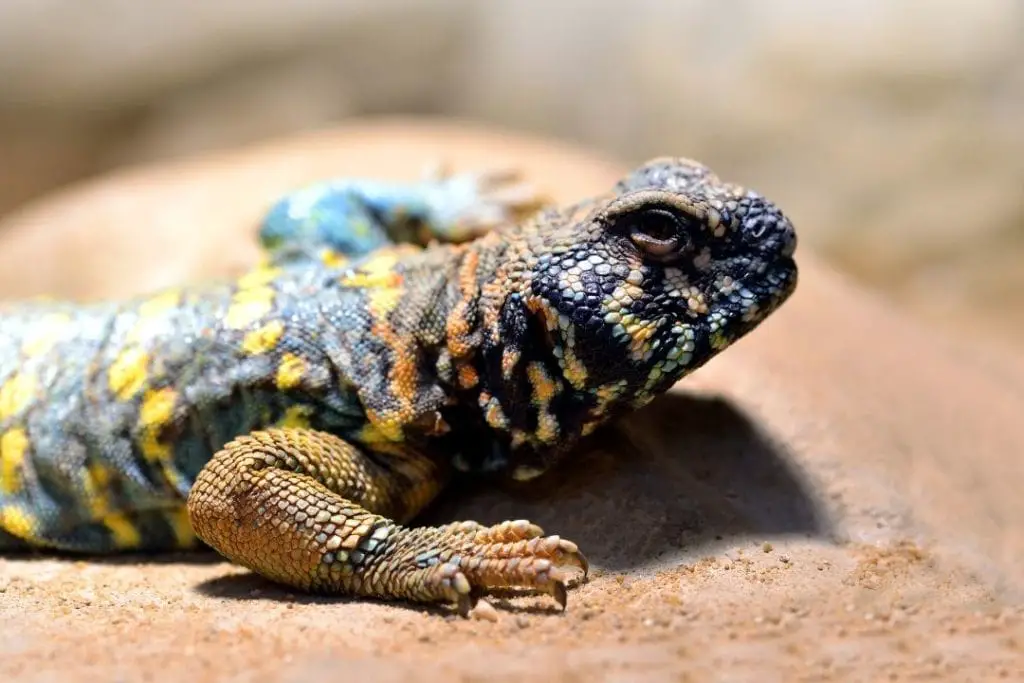
On average, an uromastyx will be between 100 and 900 grams. They are typically small, but the larger species will be weightier. Mature adults will be comparatively heavier than juveniles.
Growth Rate
Generally speaking, uromastyx has a slow growth rate. Wild animals can take over five years to reach their full size.
Captive uromastyx enjoy a regular food source which means they can grow quickly. Many captive animals can reach their full size in only three or four years.
However, these lizards should be watched closely for signs of obesity. Captive reptiles as a whole frequently have issues with obesity.
Lizards like uromastyx typically store their fat internally in their chest cavity. The extra fat stores can cause pressure on their other organs.
In females, too much fat can cause them to have issues laying their eggs. Many captive lizards also produce eggs that are so large they can easily become stuck.
The lizard will strain to lay the egg and this can cause burst blood vessels and rapid death. Always watch pet lizards for signs of obesity. Your reptile vet will be able to tell you how to help your uromastyx lose weight.
In Captivity
As I covered in the previous section, captive uromastyx are prone to obesity.
It is very easy to overfeed these animals. Always aim to keep your animal of the same size and body condition as their wild counterparts.
Since most uromastyx are small, they can be kept in a smaller enclosure. A 4’x2’x2′ is perfect. This fits the rule of four times the snout-vent length for the length of the enclosure.
The width and height can be twice the snout-vent length. Height should never be under 18 inches for the vast majority of lizards. This formula can help with the larger species as well. For instance, an Egyptian mastigure needs a minimum of 6’x3’x3′.
One of the more common ways to offer extra exercise for pet lizards is to take them out of the enclosure in a safe room or space and use treats and toys to encourage activity.
Since this genus needs such high temperatures, it can be hard to offer this unless you live in a similar environment to their native range. If you can, creating a larger enclosure with proper heating can help.
The deserts they live in do experience some major temperature fluctuations, but you should still offer a consistent temperature range to keep your pet healthy.
Spending too much time at average room temperature could cause them to get too cold for their health and digestion.
Conclusion
Most species of uromastyx are in a similar range, but some species are much larger.
Be sure you do your research on your exact species and prepare to offer a bigger enclosure if your pet ends up larger than you expected. If you have any questions or comments, please leave them below.
